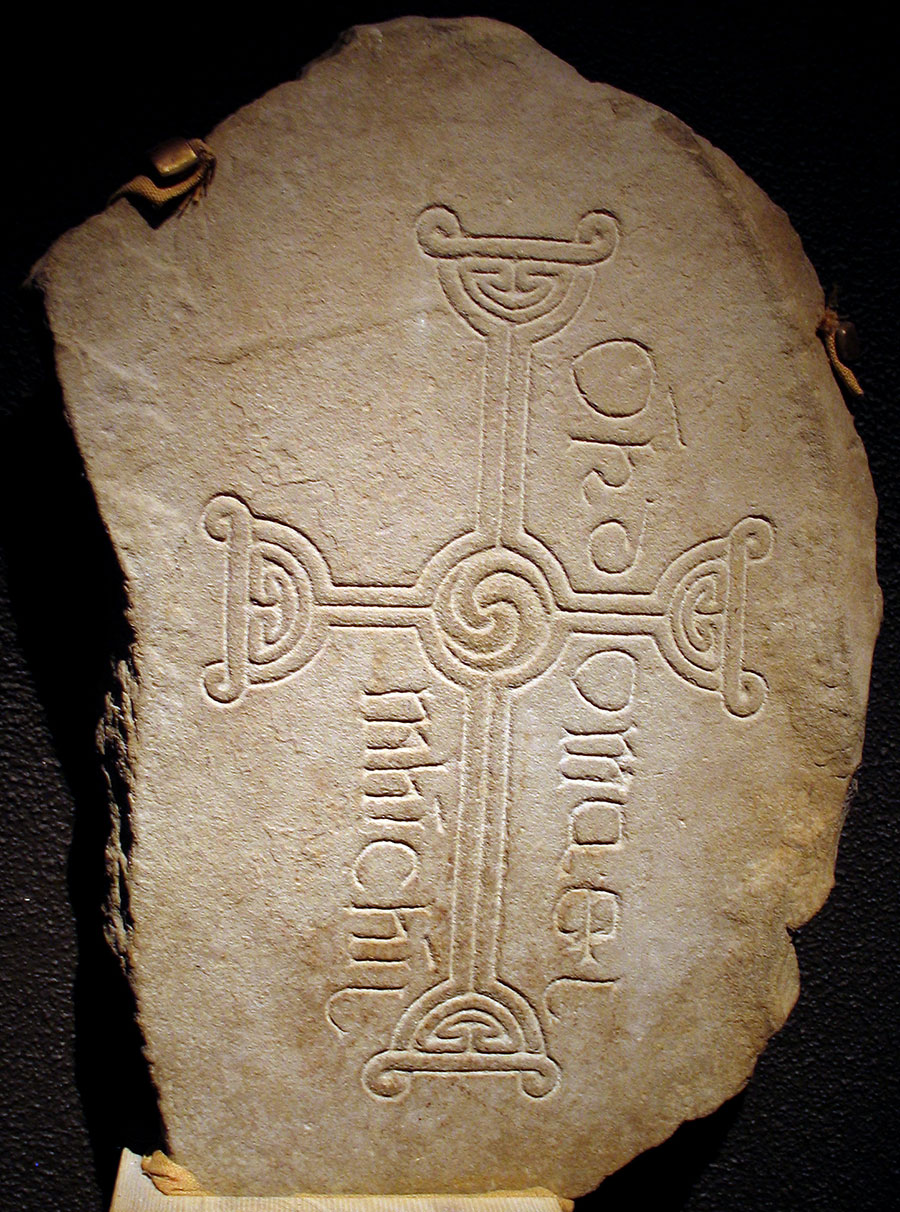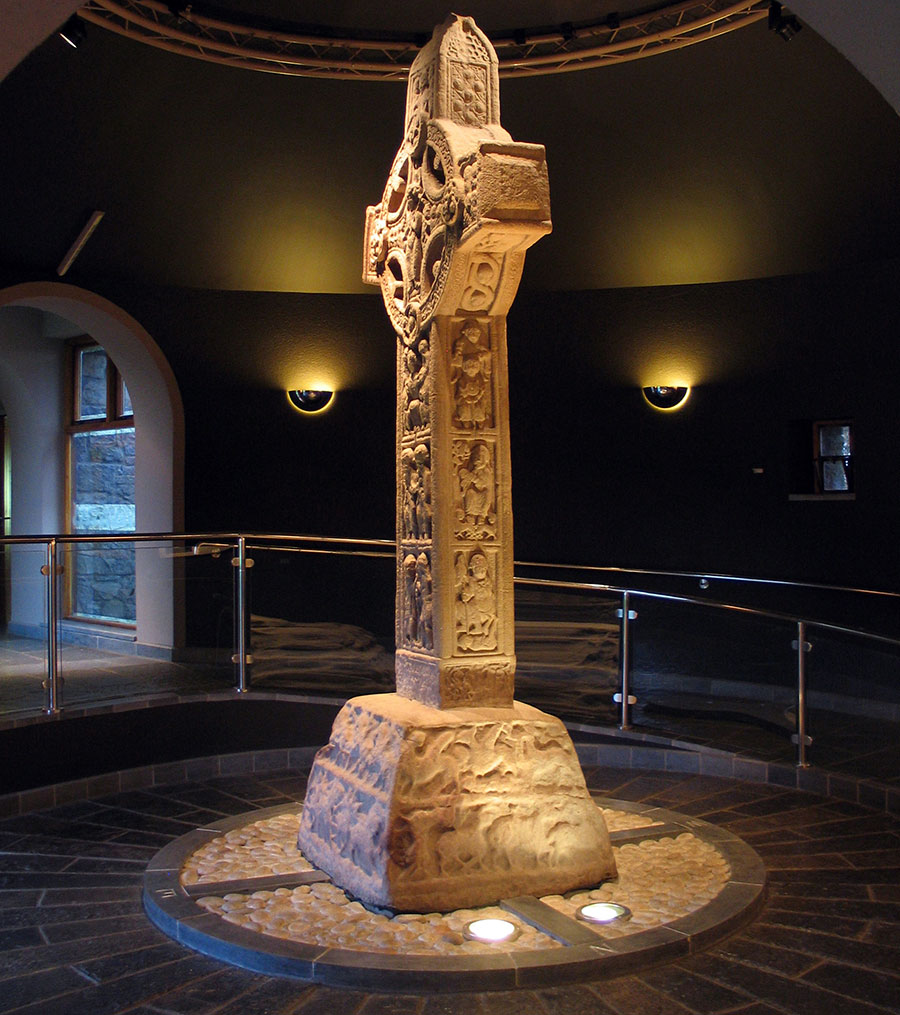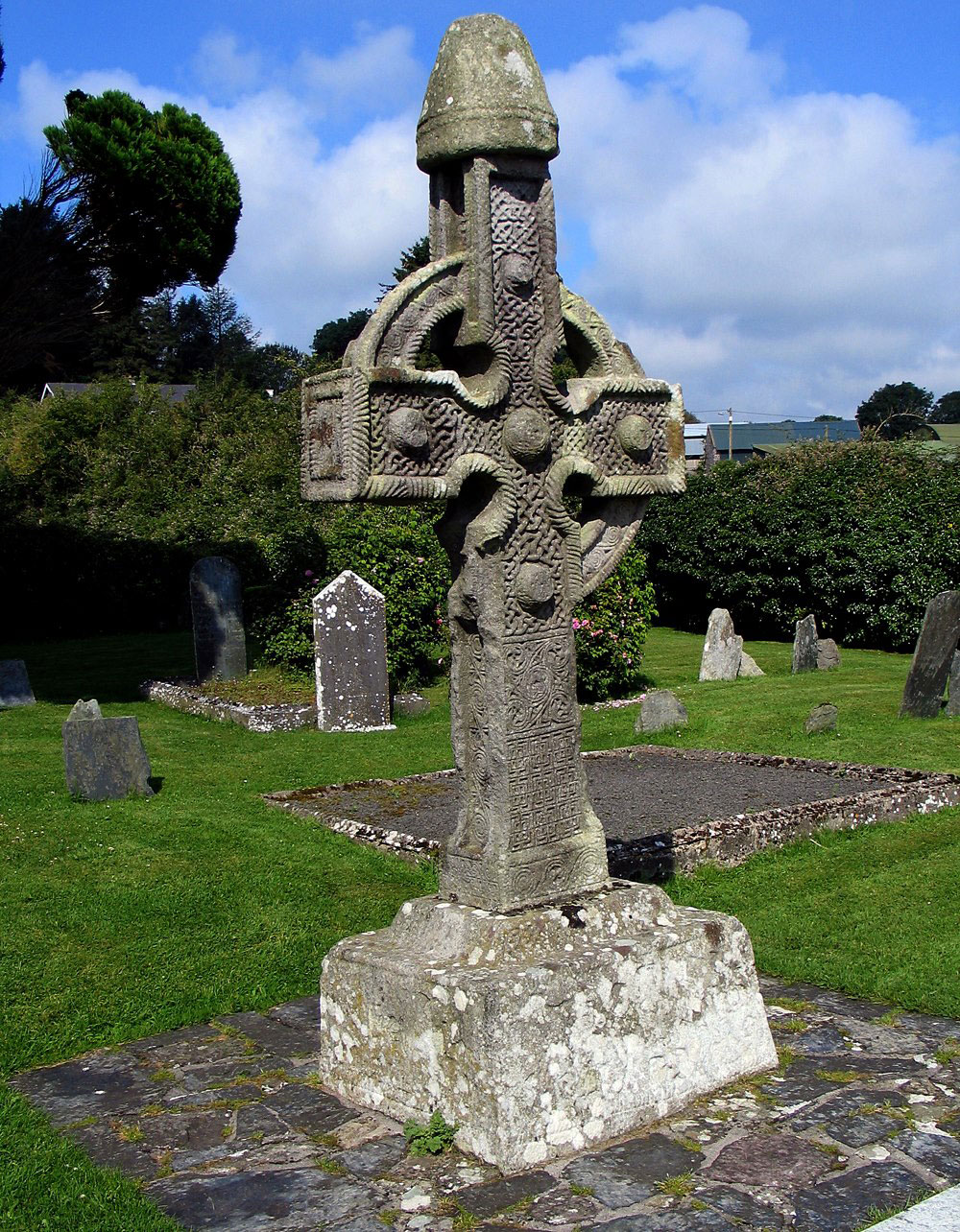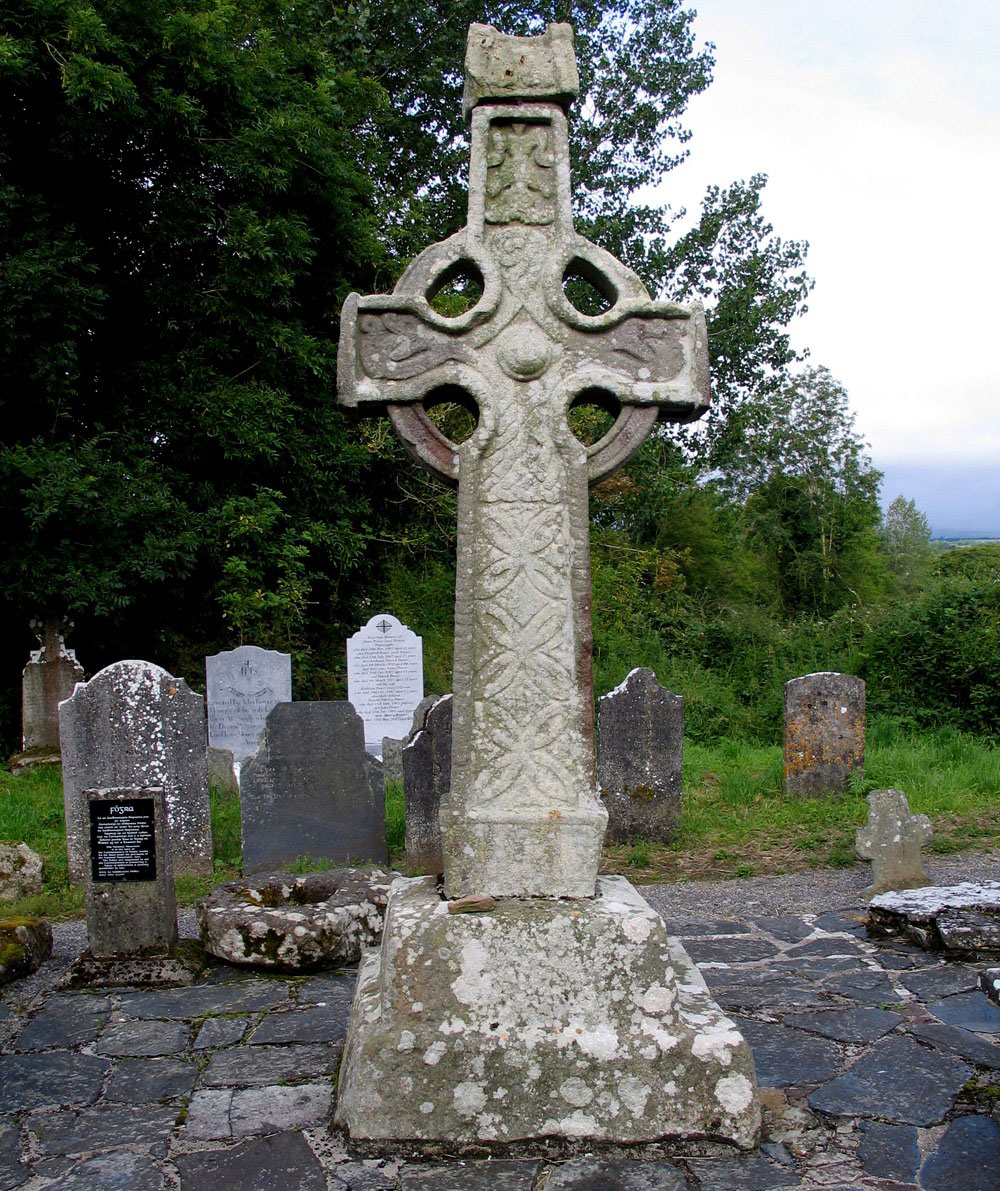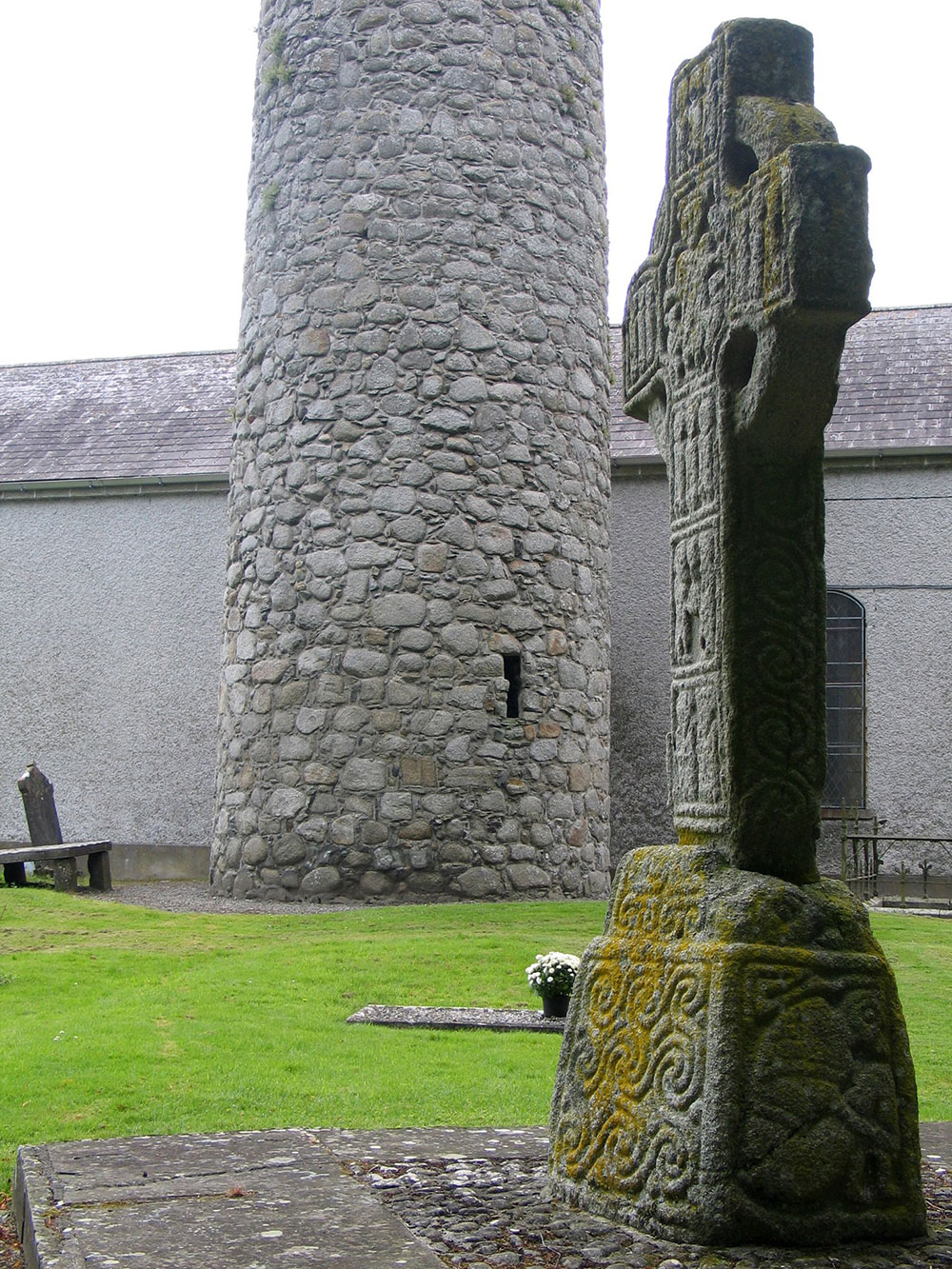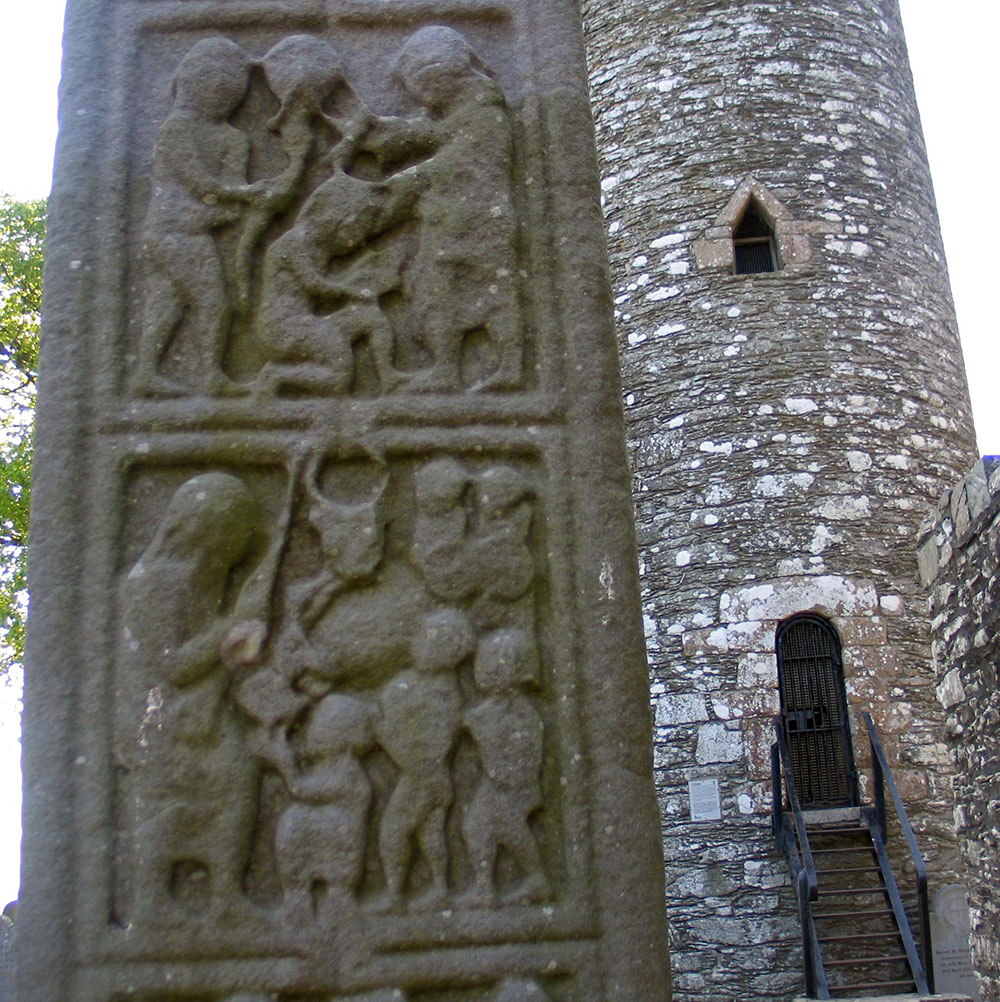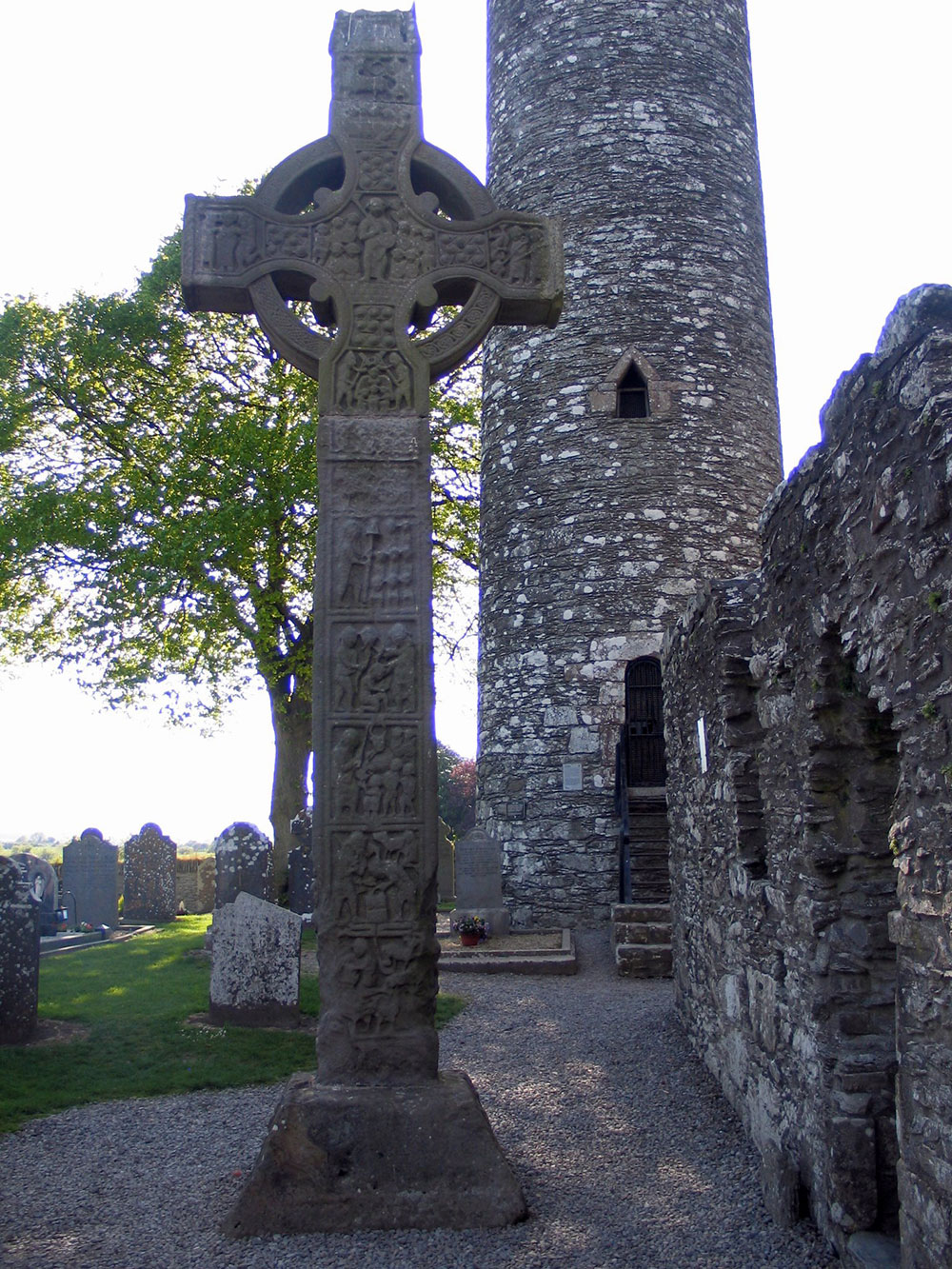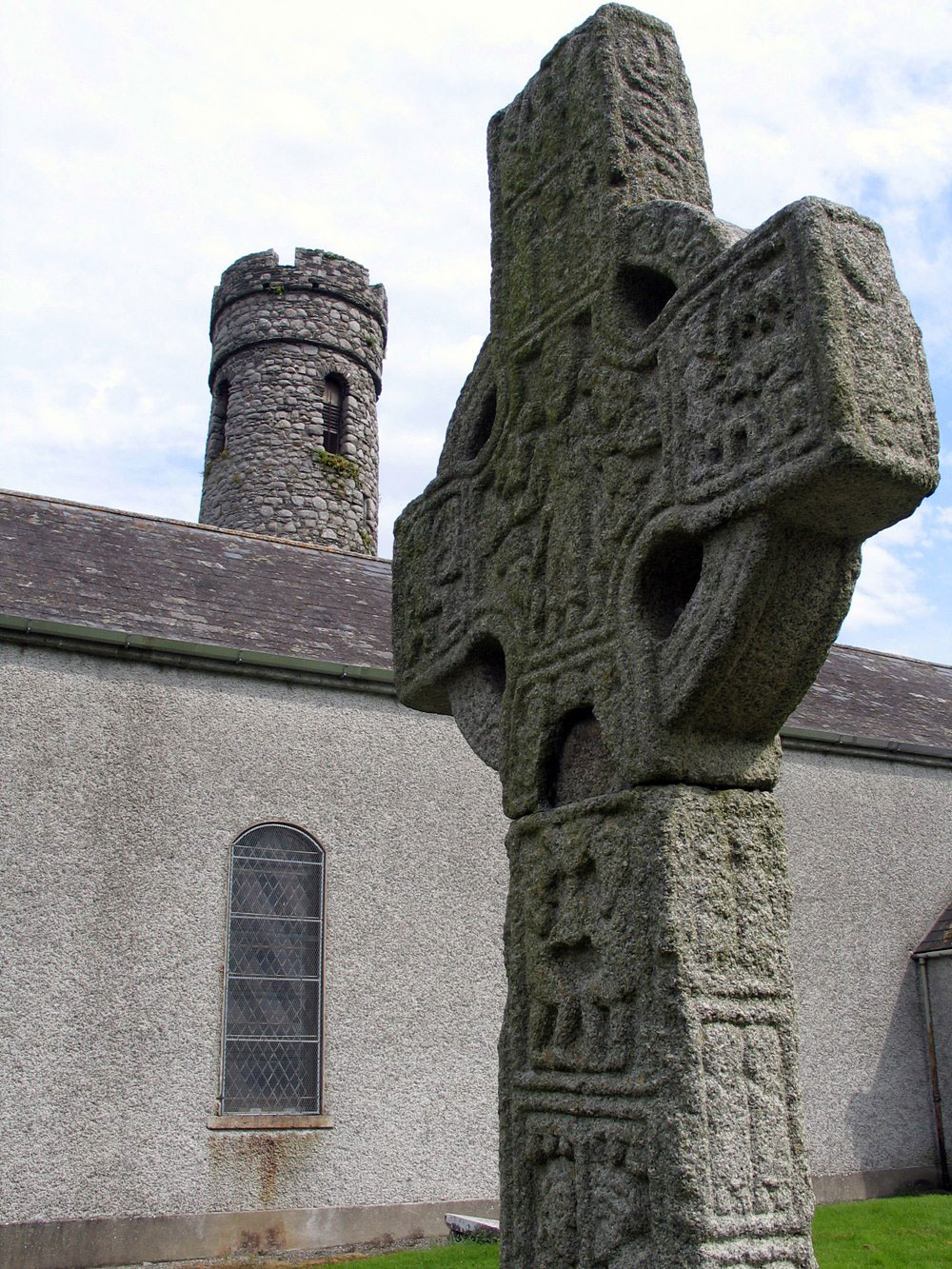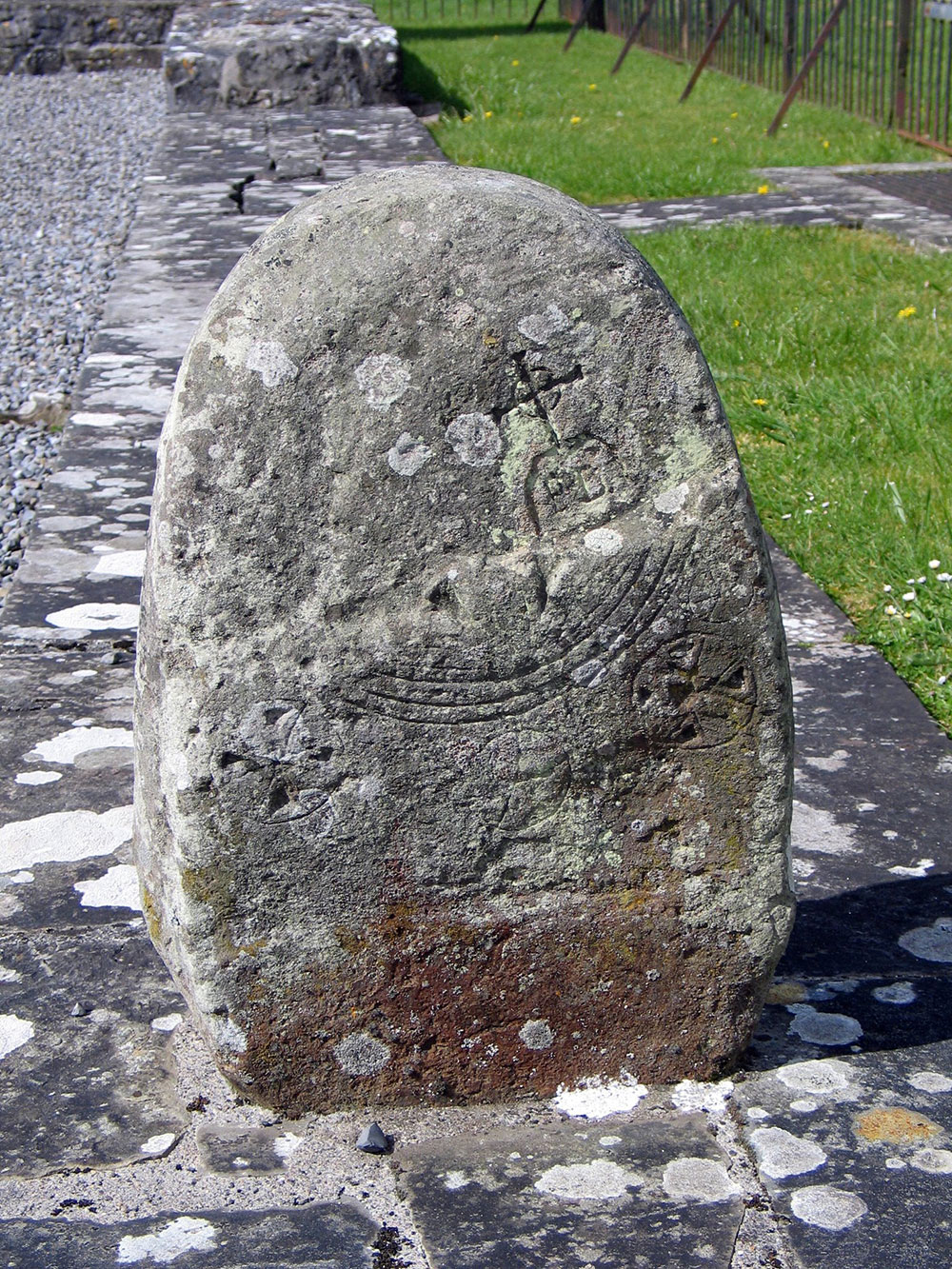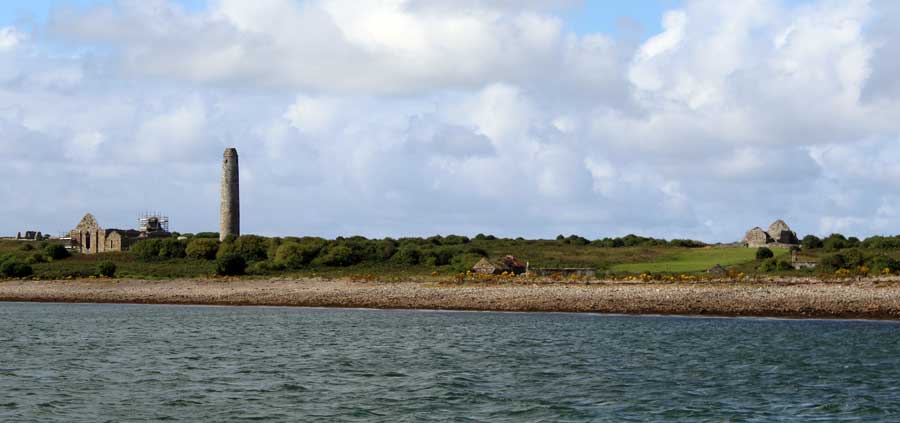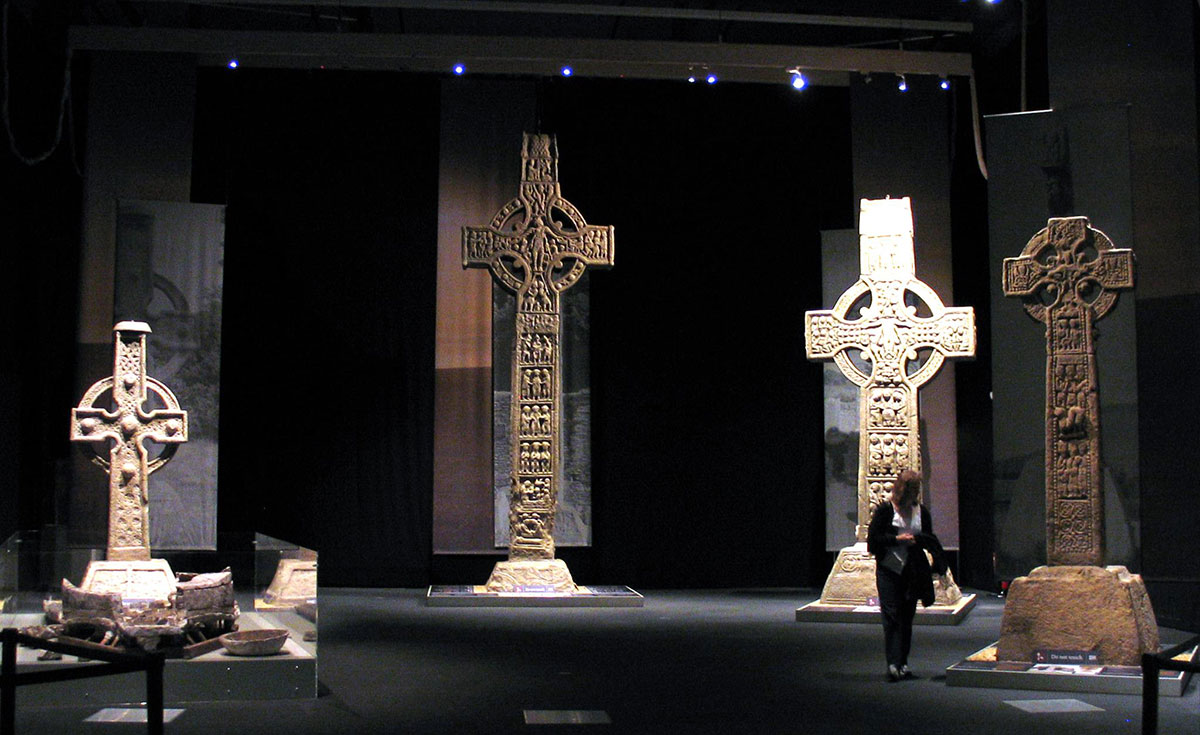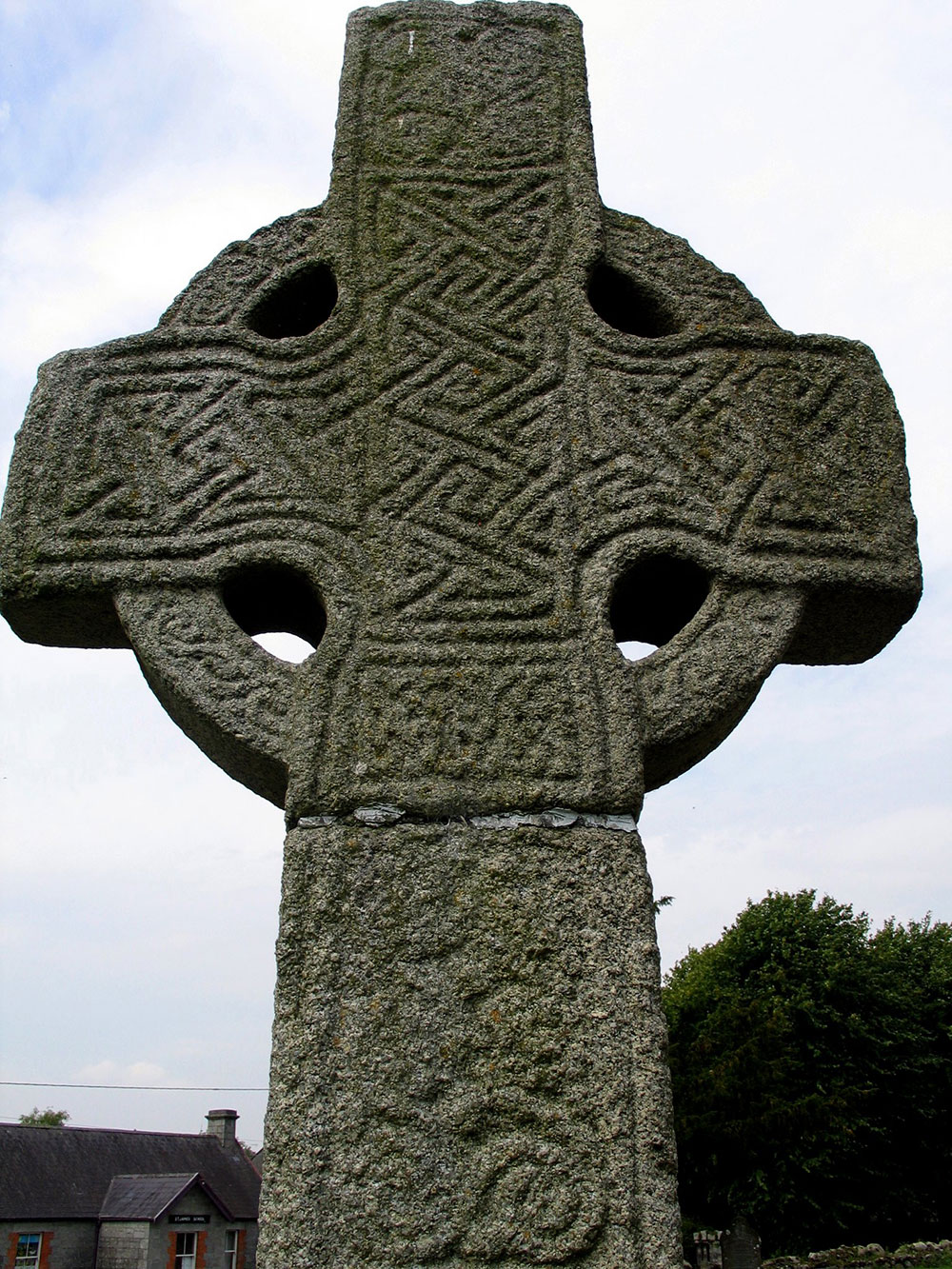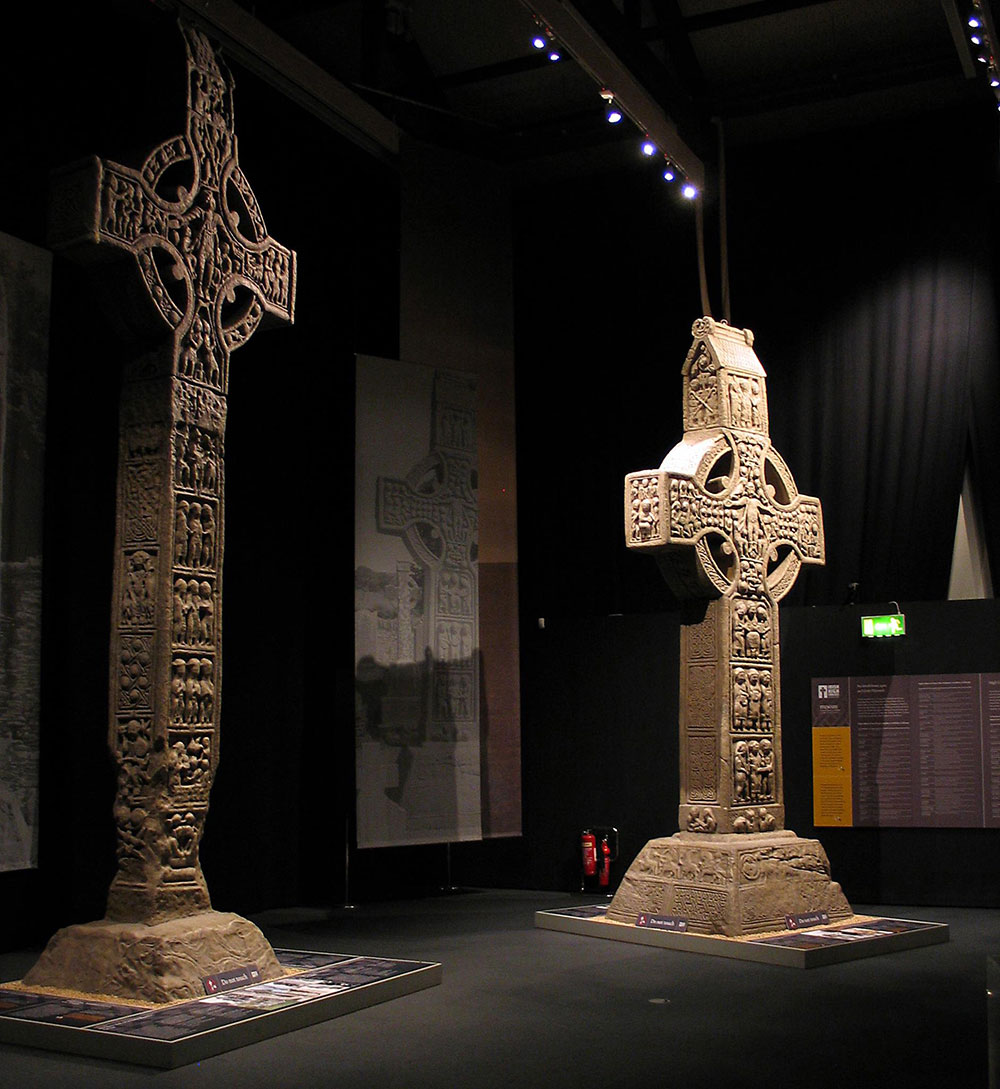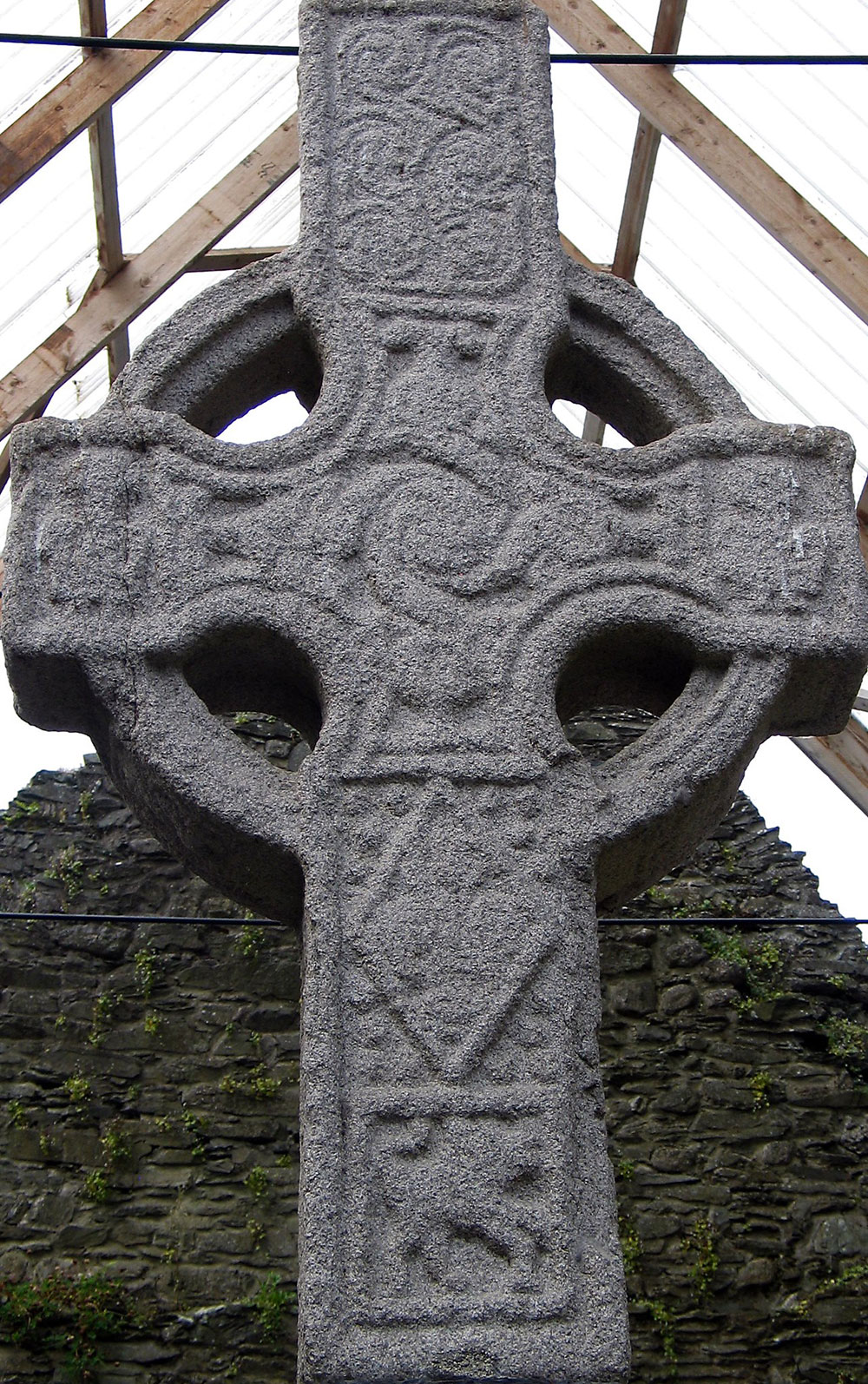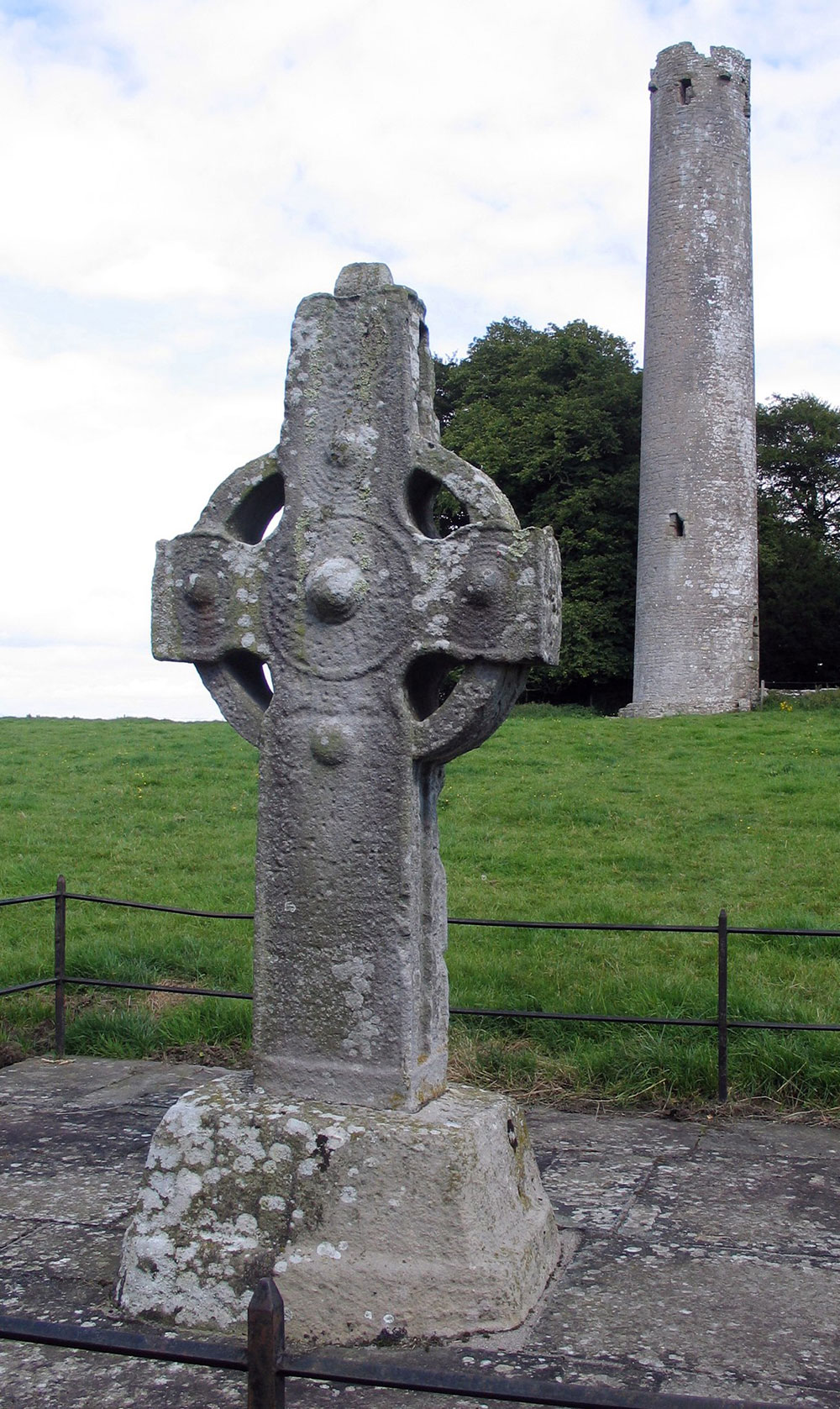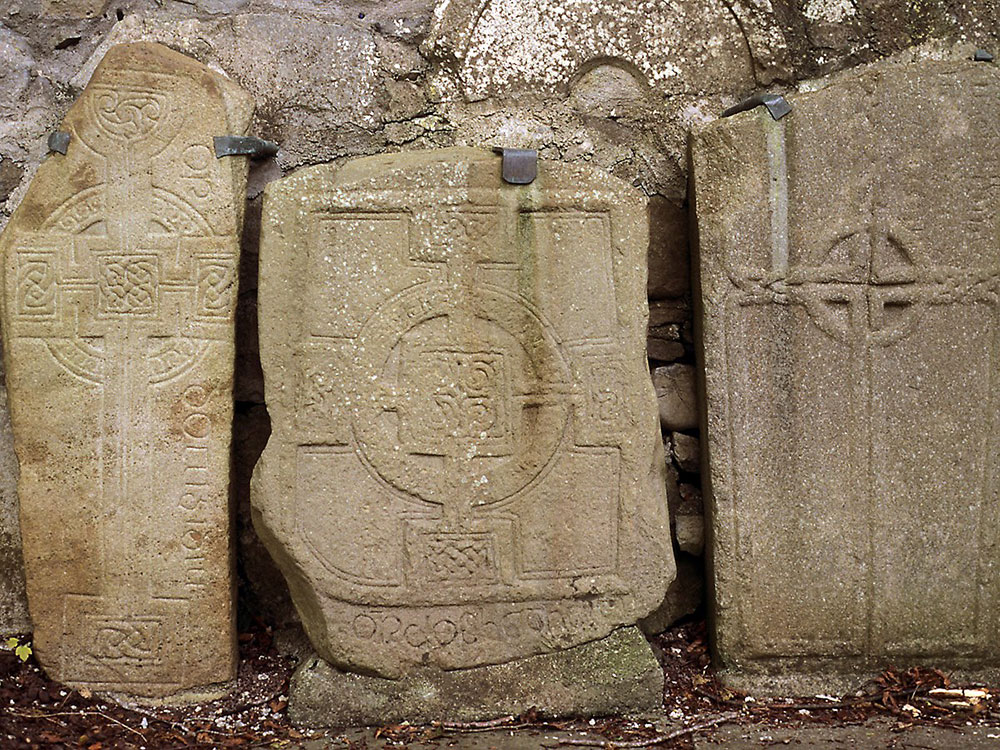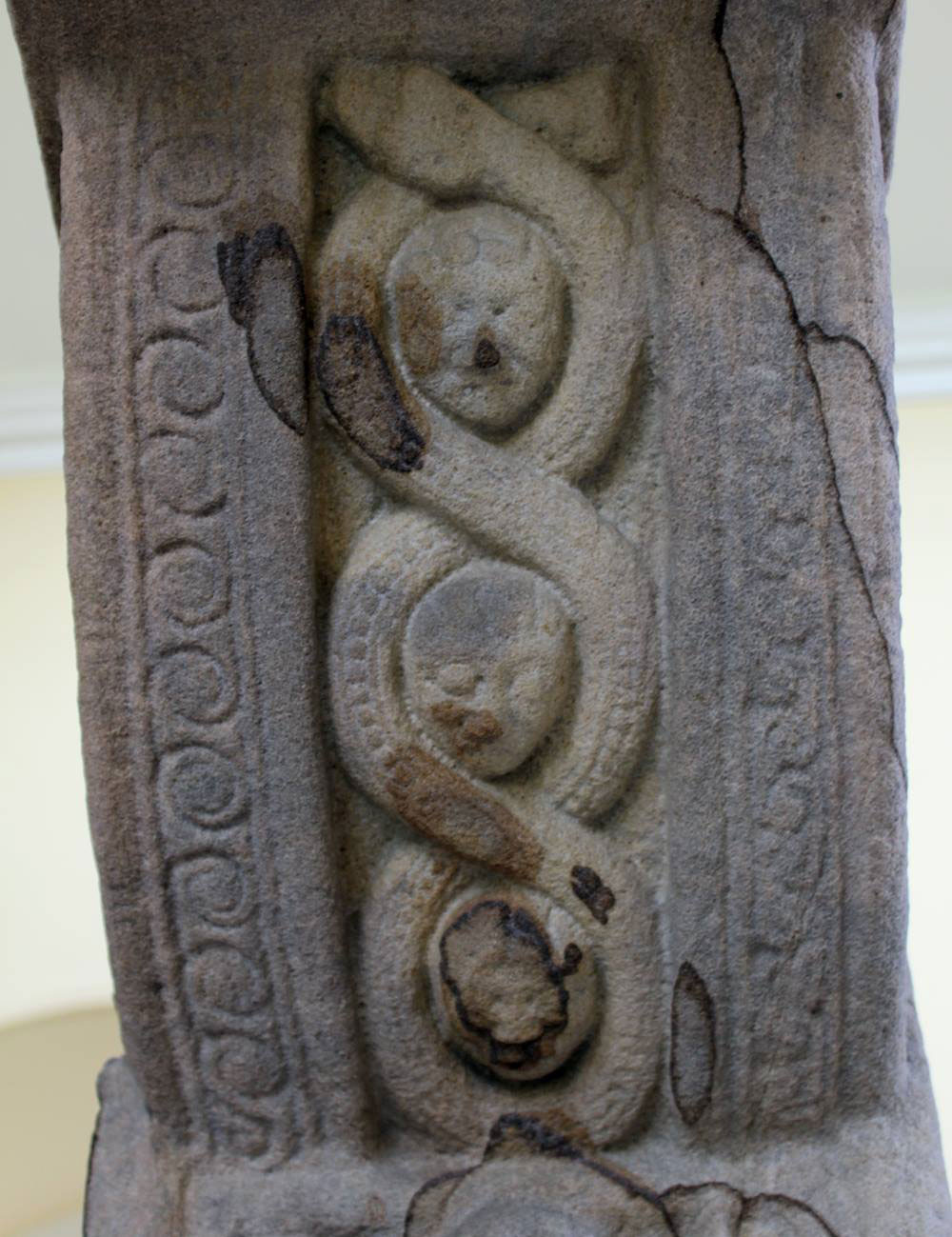Irish cross-slabs and high crosses
A very remarkable cross-carving occurs upon a small pillar- stone leaning upon the side of a well-building, situate at a little distance from Cliffoney. The design is curious, the head of the figure containing a carefully wrought swastica, or croix gammee. This form of cross was known in days of remote antiquity; and, was used in ante-Christian times by various nations.
"The truth is," writes Dr. Graves, Bishop of Limerick, "that the early Christians finding this symbol in common use, employed it as a disguised cross in times of persecution, when, with their profound reverence for the sign of the cross, they were obliged to combine a certain prudence, which restrained them from exposing the emblem of their faith freely to the view of pagans. De Eossi does not hesitate to declare that only one exception is known to the general statement that the simple undisguised cross does not appear on monuments before the time of Constantine."
The Honey Tree
"Honey-tree" is the remarkable designation of an old sycamore in the townland of Coollemoneen, in the parish of Killadoon, and it is so styled on the Ordnance Survey maps. It stands on a mound surrounded by stones, some of which are so disposed as to simulate the form of a rude altar. Like many other old and solitary-growing trees, it has legends and traditions attached to it, some of which are yet current among the old people of the neighbourhood.
"Bile" (billa), remarks P. W. Joyce, " signifies a large tree . . . ' Bile ' was generally applied to a large tree, which for any reason was held in veneration by the people ; for instance, one under which their chiefs used to be inaugurated, or periodical games celebrated. Trees of this kind were regarded with intense reverence and affection. One of the greatest triumphs that a tribe could achieve over their enemies was to cut down their inauguration tree, and no outrage was more keenly resented, and when possible visited with sharper retribution. . . . These trees were pretty common in past times ; some of them remain to this day, and are often called Bell trees, or Bellow trees an echo of the old word, Bile. In most cases, however, they have long since disappeared, but their names remain in many places to attest their former existence."
There is a townland of Billa, in the parish of Ballysadare; and in a MS. in the Library, Eoyal Irish Academy, one such tree, which is styled "the fern tree," situated in the parish of Kilmacteige, is described in an account of the district.
The Straining Stones in County Sligo
Lying on the ground in the graveyard of the old church of Killery is a thin flagstone, rather less than three feet square; at its south-eastern corner there is a small rectangular stone projecting about six inches above the surface of the soil, and at all times may be seen around it a piece of string, called the "straining string," which is supposed to be an infallible cure for strains, pains, and aches.
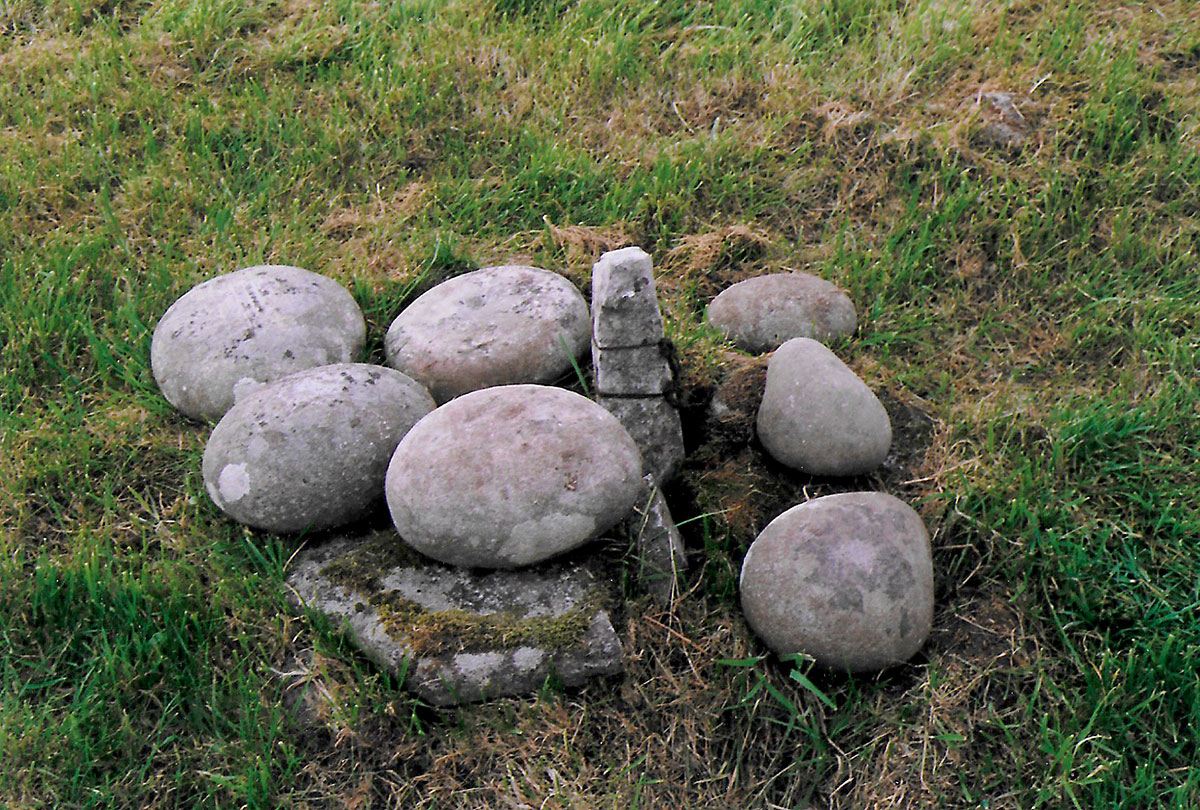
The spot is frequented by those who put faith in the efficacy of the ceremony there observed. The believer repairs, either by self or deputy, to this. Straining Stone, &c., Killery. flagstone, on which are placed the egg-shaped stones depicted in the engraving; removes from the "straining stone " the old string, replacing it by a new one, whilst repeating a Pater and Ave and prayer to the patron saint of the church before each stone swung round from left to right, as on a pivot is turned in succession, being held between the thumb and second finger of the supplicant's hand.
There are seven stones in all a mystic number. The small round bullet-shaped one was but lately added, after being dug up when the graveyard was cleared and levelled. Six of these stones are such as one would expect to find on the sea-beach. The seventh is flatter, and somewhat resembles a diminutive quern-stone, having at the top a slight artificial depression.
These stones are reputed to have been removed and thrown into the river to have even been broken by unbelievers yet they were always to be found next morning, quite uninjured, in their accustomed place. It is said that those "straining strings " or threads " are sent for from far distant parts of America, by those who have emigrated from the neighbourhood, and who place more reliance on the benefit to be derived from them than on the skill of the American doctors.
The ceremony at Killery may be regarded as the most perfect representation of the survival in the County Sligo of the semi-Christianization of a pagan custom. Lady Wilde, in her Ancient Legends, states that in the western Isles a strand of black wool is wound round and round the ankles as a charm to cure a sprain, while the operator mutters in a low voice a few doggerel lines, winding up with "In the name of God and the Saints, of Mary and her Son, let this man be healed, Amen." A similar charm was used in Germany and many other countries; in fact, the superstition is widespread. Amongst the means employed by the Babylonians for warding off the attacks of evil spirits during the hours of darkness, were (according to Professor Sayce)" magical threads twisted seven times round the limbs, and to which phylacteries were bound, consisting of sentences from a holy book."
